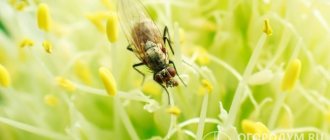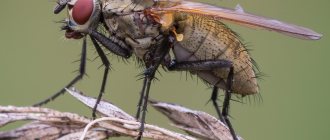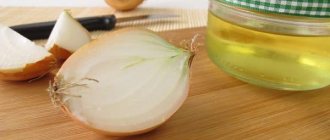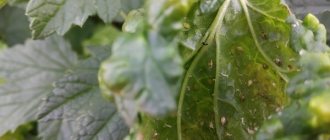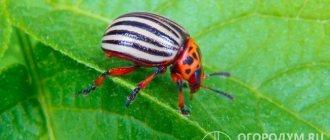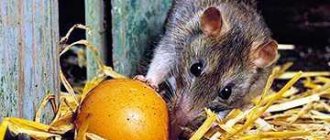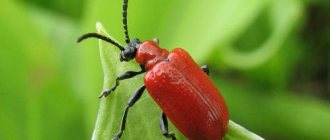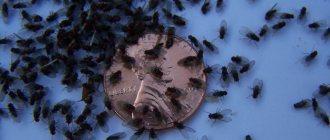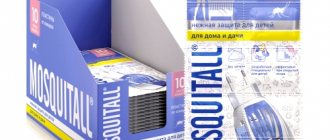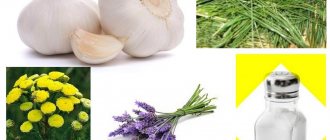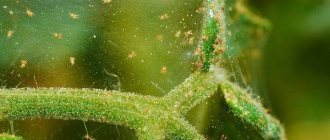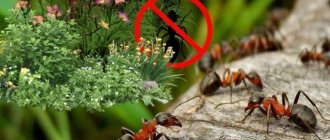The fight against onion fly begins with preventive work. I told you in the article how to protect your garden from the invasion of an insidious pest.
But if last season the fly was active in onion plantings, prevention alone will not be enough.
Today we will talk exclusively about folk remedies . After all, chemicals belonging to the class of heavy artillery are equally dangerous for humans and local fauna.
Terms and rules of processing
Since the fly flies specifically at the onion scent, most folk methods are designed to mask the characteristic smell of the plant. The other part creates uncomfortable conditions for the insect to reproduce. And only a small proportion is aimed at direct destruction of larvae.
The fly breeds throughout the summer, so spraying is done regularly at intervals of 5-14 days (depending on the substance, weather and the development cycle of the fly offspring). During intensive flight phases, irrigation is carried out more often (every 3-5 days), at other times - less often.
The first flight occurs at the moment of flowering of dandelions, lilacs, and fruit trees.
The second flight is in 35-45 days.
The third flight is in another 35-45 days.
Description of the pest
Despite its name, the onion fly, in addition to various types of onions (onions, leeks, chives), also damages garlic, some types of lettuce and bulbous flowers (primarily tulips). The pest affects crops not only in open ground, but also in greenhouses.
Appearance and life cycle
The onion fly is an inconspicuous, small (about 7 mm) insect of ash-gray or yellow-gray color. The pest belongs to the order Diptera and is very similar to the common housefly. The wings are transparent and may have two or three longitudinal veins or without them. At the edges of the wings there is a fringe of thin long hairs.
The onion fly is a small insect (7 mm), very similar in appearance to an ordinary housefly
The female lays from 40 to 60 eggs during her life, and from 5 to 20 at a time. Their size is about 1 mm. The eggs are white and have an elongated oval shape. Embryonic development is promoted by high soil moisture (60–80%). After about a week, larvae up to 10 mm in size emerge from them, which immediately penetrate into the bulb. They are legless and white. The body tapers towards the head, which has black mouth hooks. Larvae born from the same clutch stick together and eat away a single cavity inside the bulb.
The fly lays from 5 to 20 eggs at a time, from which, after a week, larvae hatch, which eat the bulbs and feathers
After 15–20 days, the larvae leave the bulbs, crawl into the ground and pupate there, forming a false cocoon. After 2–3 weeks, young flies of the next generation emerge from the pupae. This usually happens in July. In total, two generations of onion fly develop during the season; in the southern regions, under favorable conditions, a third generation may appear. The pest overwinters in the soil of those areas where the larvae developed, at a depth of 5–20 cm in the form of false cocoons.
The onion fly overwinters in the soil at a depth of 5–20 cm in the form of a pupa (false cocoon)
What harm does the onion fly cause?
The period of appearance of the onion fly depends on climatic conditions and varies in different regions from late April to early June. The main landmark for the beginning of the mass emergence of the pest is the moment of flowering of dandelions, lilacs and cherries.
As soon as the cherry blossoms, the gardener must be on alert - the massive flight of the onion fly begins
Adult flies do not eat onions; they feed on pollen from flowering plants. Their harm lies in the fact that females actively lay eggs during the season in the soil, on protruding parts of the bulbs or between the leaves. Fly larvae cause direct harm. They attack onions of the first and second years of development. In seedlings, the larvae damage the feathers. In onions of the second year of growing season, they crawl through the axils of the leaves into the bulb or penetrate it from the bottom, suck out the juice and eat away the pulp, as a result of which the bulbs rot and the plants die.
Causes of defeat
The fight against onion flies that have already appeared can be quite difficult and not always successful. To carry out timely and correct preventive measures, it is necessary to know the reasons for the mass invasion of the pest on onion beds. Among them are:
- violation of crop rotation rules;
- incorrect placement of crops in the garden (poor choice of neighbors);
- late planting of onions;
- lack of deep autumn digging of the soil;
- use of infected and untreated seed material before planting.
No. 1. Wood ash
This is the most affordable way to combat onion flies. After watering or rain, ashes are applied to the row spacing at a rate of 100 g/m. and sealed with a flat cutter or hoe. The procedure is repeated every 10-14 days.
On a note. To enhance the effect, for every 100 grams of ash, you can add 25-30 grams of tobacco powder, as well as a teaspoon of hot ground pepper.
Ash infusion will also help protect the plantings. To do this, add 400-500 grams of ash to 10 liters of warm water and leave for 24 hours. After filtration, 30-50 grams of laundry soap are added to the mixture. Consumption is 1-1.5 liters per linear meter of bed.
No. 2. Potassium permanganate
Some gardeners believe that potassium permanganate is fatal not only to pathogens, but also to the brood of various pests.
To prevent the onion fly from multiplying, they water the onion plantings with a solution of manganese (a teaspoon per 8-10 liters) three times. The first time at the time of disembarkation, then at intervals of 7-10 days.
But I note that the solution will only work in high concentration . This will cause the death of many beneficial soil inhabitants and also damage plant roots. Therefore, I personally do not use this product.
How to process
After preparing the solution, it must be sent directly to the root of the plant. At the same time, try not to get it on the green leaves. If this happens, you will soon see a burn on the feathers. As a result, the plant will constantly be sick.
It is worth treating onions with the solution in the evening, when the sun has already set.
Another solution of ammonia can be used for spraying. For these purposes, you will have to purchase a watering can that produces streams of visible splashes. Spraying should be done after sunset, after watering. You can also choose the morning time, but before dawn if you use a watering can that produces drizzle, then most of the main substance can be lost right in the air.
It is also very important to adhere to the dilution proportions of the ammonia solution. If the concentration of the drug is exceeded, it will lead to burns of the head of garlic and the root system of the onion, destroy the beneficial microflora of the soil and contribute to the impoverishment of the land.
It will also be important and useful to learn how often you can water the onions with ammonia.
It is worth carrying out such watering in the last days of June. In total, it is enough to process the crop 2 times a month. And after this it is necessary to loosen the soil. As soon as the onion is removed from the ground, it must be cleared of vegetable residues. Before winter, carefully dig up the beds.
The video shows onion treatment against pests:
You shouldn’t wait for parasites to start attacking vegetables in the spring, as soon as the ground has warmed up. Then they will not be able to lay eggs on cultivated areas of land.
After treating the onions with a solution of ammonia, it is necessary to perform regular watering using double the amount of running water. This must be done so that the solution penetrates deep into the soil layers.
It will also be useful to learn how to pour salt on onions and in what case it should be done.
No. 3. Metronidazole
The well-known antibacterial drug is widely used by gardeners. Including pest control.
The recipe for the solution is simple: 5-10 tablets per 10 liters of water. The onion is processed when the feather height is 5-10 centimeters. It is believed that the larvae die after a single treatment.
Reviews about the method are mixed - the chance that it will help does not exceed 50%.
Chemical treatment for onion flies
In advanced cases, when preventive measures were not taken in a timely manner, chemicals have to be used. Their use is extremely undesirable, since onions tend to accumulate harmful substances and can be dangerous if consumed. When spraying with insecticides, it is necessary to follow the dosage indicated in the instructions, spraying should be carried out in the morning or evening in dry, windless weather, and also maintain the recommended waiting period. After chemical treatments, it is better not to use onion feathers at all.
Ammonia
Ammonia (an aqueous solution of ammonia) is a liquid with a pungent odor that is sold in pharmacies. It is a chemical preparation, but to a greater extent the use of this remedy to combat onion flies can be attributed to folk methods. There are no clear instructions for its use in the sources.
Ammonia with its pungent odor repels onion flies
There are various recommendations regarding the concentration of the solution: from one to five tablespoons per 10 liters of water. It is believed that to use the product for preventive purposes, it is enough to dilute 1–2 tablespoons of the drug; increasing the concentration is recommended if a significant number of plants are affected. Ten liters of solution will be enough to spill 2 m2 of planting. They begin to process the onions during the cherry blossom period, and then do this several more times with an interval of 7–10 days. The beds are first watered with clean water, then with a solution between the onion rows and again with clean water.
Video: ammonia treatment against onion fly
Metronidazole
These are antibacterial tablets used to treat people and can be bought at the pharmacy. Their use as a means of combating onion flies can most likely also be classified as folk remedies. Information about the concentration of the solution varies. The most common dosage is 4 tablets per 10 liters of water, but there are other options - from 5 to 10 tablets for the same amount of water. Metronidazole is used to combat fly larvae. The treatment is carried out once, when the feather has already become stronger and is at least 5 centimeters in height.
Some gardeners use metronidazole to control onion flies.
Reviews about the use of this remedy are contradictory. Some gardeners claim that the drug is effective against onion flies, while others have not received any results from the treatments.
I tried to look for information about watering onions with metronidazole against onion flies on the Internet, but I couldn’t find it, so I’ll share what I did myself. I was told that for 10 liters of water they use 10 metronidazole tablets. True, everyone does it differently; some use 5 tablets per 10 liters of water for irrigation. I decided that I would use the middle option. I crushed 5 tablets and poured the resulting powder into an 8-liter watering can. Stirred and poured the resulting solution on the onions. After 1.5 days, I picked a feather, looked and saw live onion fly larvae in it. I don’t know, either not enough time has passed, or I still needed to use 10 tablets per 10 liters of water, I’ll see what happens next.
Recent Entries
Lilac perennials that are beautiful, compact and do not crowd out other plants Why when buying seedlings you should not take the sellers’ word for it and how to determine the age of the plant using 3 signs Tomato seedlings have turned purple or whitish: why the color has changed and how to save the plants
natla
https:// www.bolshoyvopros.ru/questions/1584569-kak-razvodit-metronidazol-dlja-poliva-luka-ot-lukovoj-muhi-kak-polivat.html
Metronidazole is a controversial drug not only regarding the concentration of the solution and its effectiveness in the fight against onion flies. When diluted with ten tablets in a bucket of water, or even one tablet, it can be hazardous to health.
Zemlin
The popular garden insecticide Zemlin is used during the planting of onions. The toxic activity of the drug lasts up to 60 days. The remedy against onion fly can be applied to the upper layers of the soil symptomatically when it is urgently needed. Zemlin is not toxic to humans. It is produced in the form of granular powder, which is scattered on the soil and then loosened. The consumption rate is 3 g/m2. For a more uniform distribution, the drug is used in a mixture with sand. A half-liter container is filled 3/4 with sand, 30 g of granules are added there and mixed. In case of mass infestation by pests, the drug is used for 2–4 seasons in a row until they disappear completely.
Zemlin is scattered on the beds during planting of onions, its effect lasts up to 60 days
Fly eater
The drug is successfully used to combat insects and onion fly larvae. The fly eater is considered harmless to the soil and beneficial organisms. Thanks to the aromatic bait, the pest eats it and dies within two to three days. After moistening (precipitation or watering), the active substance penetrates the plants and has a poisonous effect on flying insects. Therefore, the fly beetle is not used to treat onion plantings or is added to the soil in advance to withstand the waiting period before eating onion leaves. The drug is produced in the form of granules and is used once before planting onions. Its validity lasts for two months, this period is also a waiting period. The granules are scattered at the rate of 5 g/m2 at an air temperature of no higher than 25°C and the soil is loosened superficially.
The fly eater is effective against onion flies and is harmless to the soil and beneficial organisms
Inta-Vir
The popular and inexpensive insecticide Inta-Vir is moderately toxic and is successfully used by gardeners to combat onion flies. The solution is prepared at the rate of one tablet per 10 liters of water, it is used immediately after preparation. You can treat the beds with a regular watering can or with a spray bottle. Repeated treatment is allowed no earlier than 14 days. You should not eat vegetables for the same amount of time after using the drug. You can do no more than three treatments per season.
Inta-Vir is a popular insecticide with moderate toxicity, successfully used to control onion flies
Alatar
This product destroys almost all pests of garden and garden crops, including onion flies. The inclusion of two active poisons in Alatar provides the drug with a combined mechanism of action on the pest’s body, resulting in high mortality of its large-scale colonies. Alatar can be used twice, maintaining an interval of 10 days between treatments. The drug is used very rarely more than twice. The waiting period is 3 weeks. To prepare a working solution, 5 ml of the drug is diluted in 4 liters of water, this amount is enough to treat 100 m2. Alatar is not washed off by rainwater, and is also resistant to ultraviolet rays and high air temperatures.
Alatar contains two active poisons, which makes the drug highly effective against most pests
Creolin
Reviews about the effectiveness of this drug in the fight against onion flies are positive, even enthusiastic. However, Creolin is recommended to be used as a last resort when other methods do not give the desired result, since the product is very toxic. The drug is a viscous liquid with a pronounced pungent odor and consists of naphthalene, coal oil, and ichthyol. It is used by veterinarians as an antiparasitic agent.
Creolin is very toxic, so it is used with great caution
The instructions for creolin, sold in pharmacies, contain compositions for treating animals and premises against ticks and other parasites. Creolin is not on the list of approved drugs, but it is included in many pesticides. The most common dosage option in sources is 2 tablespoons per 10 liters of water. The first treatment can be carried out when the onion feathers reach a length of 8–10 cm, and repeated treatment after three weeks.
No. 4. Tobacco
The smell of tobacco reliably repels flying parasites from onion plantings. The space around the plants is dusted with the substance at the rate of a tablespoon per square meter. The operation must be carried out on damp soil, followed by surface loosening.
Advice. If there is not enough tobacco, you can combine it with lime or river sand in a 1:1 ratio. More effective additives are mothballs and hot pepper (also 1:1).
Tobacco infusion is also very helpful in repelling flies. Take 200-250 grams of tobacco crumbs per 10-liter bucket of water, leave for 2 days, filter, add soap and generously spray onion foliage. About a liter of this infusion is consumed per square meter.
The frequency of use of the infusion and powder is at least once every 7-10 days.
It is known that nicotine is released only in an alkaline environment. Therefore, it is important to properly prepare the repellent solution:
No. 5. Birch tar
The product has a pungent, persistent odor that many pests cannot tolerate. And the onion fly is no exception.
To make a solution, mix a tablespoon of tar and liquid soap in a bowl, add 0.5 liters of water. After this, the volume of liquid is increased to 10 liters, poured into an old watering can with a diffuser and the onion plantation is watered with the odorous mixture.
The first time the solution is irrigated, the furrows are irrigated before planting the onions. Watering the rows is repeated every 5-10 days (more often if it rains). After work, the soil is loosened superficially.
On a note. Soaking the sets and garlic cloves in a tar solution (a teaspoon per liter of water, 1-2 hours) both disinfects and protects against flies.
No. 6. Table salt
Highly salted water is destructive for voracious worm-like larvae. But it also provokes salinization of the soil, which makes it unsuitable for gardening.
So it is recommended to carry out such processing no more than once per season.
Dilute 200-300 grams (a glass) of salt in 10 liters of water and water the moist soil in the garden bed when the feather grows to 8-10 centimeters. After 3-4 hours, water with clean water to wash off the remaining salt from the leaves.
Instead of water procedures, you can add a mixture of soda and salt (1:2) to the garlic and onions 1-2 times during the summer.
Signs of a pest in the garden
It is quite difficult to see the larvae on the soil surface, since they do not crawl out unless absolutely necessary. However, just by the type of plants, it immediately becomes clear that the pest has settled in the garden.
When it appears, plants begin to develop slowly; on garlic and onions, the feathers turn yellow and wither. In addition, an unpleasant odor may appear. To the touch, the bulbs become quite loose, soft, and a rotten coating forms on them. Such vegetables should not be consumed as food.
There are several fairly good and effective ways to help get rid of onion flies. These include both folk remedies and chemicals. Here are several options to solve the problem.
No. 7. Herbal infusions
Wormwood, pine needles and mint
Regular spraying with herbal infusions allows you to successfully hide the onion smell:
- wormwood: 1-1.5 kilograms of fresh chopped herbs per 10 liters of water for 2-3 days;
- dandelion roots: 200 grams per 10 liters of water for 7 days;
- pine needles: 0.5-1 kilogram per 10 liters of water for 5-7 days;
- valerian, mint, wild rosemary, tansy: 500-600 grams per 10 liters for 1-2 days.
To treat a square meter of plantings, a minimum of 2-3 liters of infusion of smelly herbs is required. The frequency of spraying is once every 7-10 days.
No. 8. Planting onions with marigolds, carrots, tomatoes
This will help confuse the fly and the pest will not find its way to the onion bed. Onions and garlic are combined with the following crops.
Dill. The spice is sown pointwise between the rows of onions. Or you can first plant the seedlings, scatter dill seeds on top and lightly cover them with a rake. Usually the plants do not interfere with each other, you just need to remember to regularly pull through the greens.
Tomato. Nightshade crops also have a distinct odor that repels flies. To get a good result, it is enough to place the onion bed next to the ground tomatoes.
Carrot. Some gardeners like to alternate rows of carrots and onions in one plot. Yes, this is a beneficial combination in terms of pest control. But you also need to take into account that cultures need slightly different care.
For example, it is advisable to dry the soil under onions 1-1.5 weeks before harvesting, but carrots need watering at all stages of growth. Therefore, it is better to do this: divide the bed into two parts (lengthwise or crosswise, whichever is more convenient) and plant one with carrots, the other with onions.
Marigolds, calendula . Flowers are sown between onion rows, or along the edge of the bed. In this case, the distance between the rows is increased to 40-45 centimeters. This is necessary so that the plants do not shade each other.
How to care for onions: 5 rules
How to save a bow from an onion fly? First of all, you need to provide it with proper care so that the plant is healthy:
| Rule 1. Observe boarding time Onions are planted in the ground in mid-April, in dry but not hot weather. The size of the bulbs when planting should be 1.5–3 g. Small planting material will give a small harvest, and from a large set the onion can go into arrows. The distance between the bulbs in a row is 7–12 cm | |
| Rule 2. Apply fertilizers Before planting onions, the soil allocated for them must be fertilized with rotted manure and mineral fertilizers, this will help the onions to develop better | |
| Rule 3. Remove weeds To prevent onions from getting sick, you need to periodically loosen the soil under it and weed out the weeds | |
| Rule 4. Water If there has been no rainfall on the site for a long time, the onions need to be watered generously 2-3 times a month. Excessive watering is also harmful to this crop, as is drought. A month before the onions ripen, watering should be stopped, then the bulbs will fully ripen and will be well stored | |
| Rule 5. Harvest on time Onions should be removed from the site after they have turned yellow in dry weather. It needs to be dug up and left in the sun to dry. Bulbs should be stored in a cool, dark place. |
The video explains in detail how to care for onions. These measures will help protect it from diseases and pests, including onion flies:
No. 9. Soap
Typically, liquid or solid laundry soap is used. For 10 liters you need to add 30-50 grams of grated bar or liquid version.
The product is applied not only to the onion feather, but also to the ground around the plants. During the season, 3-4 treatments are done with a week gap between them.
Advice. To prepare a soap solution, soft water - filtered or rain - is better suited.
No. 10. Naphthalene
The smell of this substance successfully repels the fly family from onion plantings. In addition, it is quite durable.
Mothballs are ground to powder and mixed with sand (8-10 stinky peas per half bucket). The composition is scattered over the onion plantation. The operation is repeated every 7-10 days during the stage of active reproduction of the pest.
To increase the processing efficiency, wood ash is used instead of sand. The mixture is prepared at the rate of one part crumbled naphthalene to 10 parts ash.
No. 11. Kerosene
A fly will fly past your onions if you sprinkle the rows with sand “scented” with kerosene every 10-12 days. ½ bucket consumes 200 milliliters of combustible mixture.
An aqueous solution (2-3 tablespoons of kerosene per 10 liters of water) has a similar effect. You can add 100-200 grams of salt to the mixture. By the way, this composition additionally causes the death of onion fly larvae.
Advice. All manipulations with kerosene are carried out with gloves, since the characteristic odor easily eats into the skin and is difficult to wash off.
The first time kerosene is used is in April-May, when the pest has just woken up. Next, 2 more treatments are performed with a break of 10-14 days. But this time salt is no longer added.
Did you know? Kerosene has gained recognition among summer residents as a herbicide. But it is absolutely safe for onions and does not cause damage to the crop.
Reasons for appearing in the garden
Onion flies will appear in a bed with onions that are planted in the same place as last year - there is a violation of the crop rotation order, which is the main reason for the appearance of the pest. If the soil under the onion beds has not been dug to a depth of 25 cm, then the pupae and eggs will not die, and in the spring young flies will emerge from them. You can also bring insect eggs into the garden with seed material, if you do not check its quality and do not treat the bulbs before planting them in the soil.
No. 12. Ammonia
Ammonia is a popular pharmaceutical drug that gardeners respect as a fertilizer and pest repellent.
It drives away onion flies from the beds with a sharp, strong odor. The fight begins with the emergence of the first spring generation, and continues at intervals of 10-12 days. Pour 3 tablespoons of an odorous substance into 10 liters of water.
Due to the fact that the solution also provides nitrogen fertilizing, treatments are completed no later than mid-June.
A more advanced composition is also prepared based on ammonia: a tablespoon of ammonia, 2-3 drops of iodine, a gram of potassium permanganate and boric acid per 10 liters of water. Such a multi-component mixture will not only repel the fly, but will also destroy part of its voracious offspring.
Symptoms of plant damage by garlic fly
First of all, it is necessary to say which garden plants the garlic fly attacks. This list includes the following plants:
- leek;
- bulb onions;
- garlic.
When growing these crops in your own garden, starting in June, you should carefully inspect the beds for the following signs:
- the ends of garlic or onions, for no apparent reason, suddenly begin to turn yellow and then dry out;
- a putrid smell emanates from the garden bed;
- beds with garlic or onions develop poorly and look depressed.
If you detect at least one of the listed symptoms, you need to conduct a thorough examination of the entire bed. If garlic fly larvae are really operating on garlic, then it will not be difficult to detect them.
Affected garlic should be immediately treated with folk remedies or special purchased chemicals to destroy the larvae.
